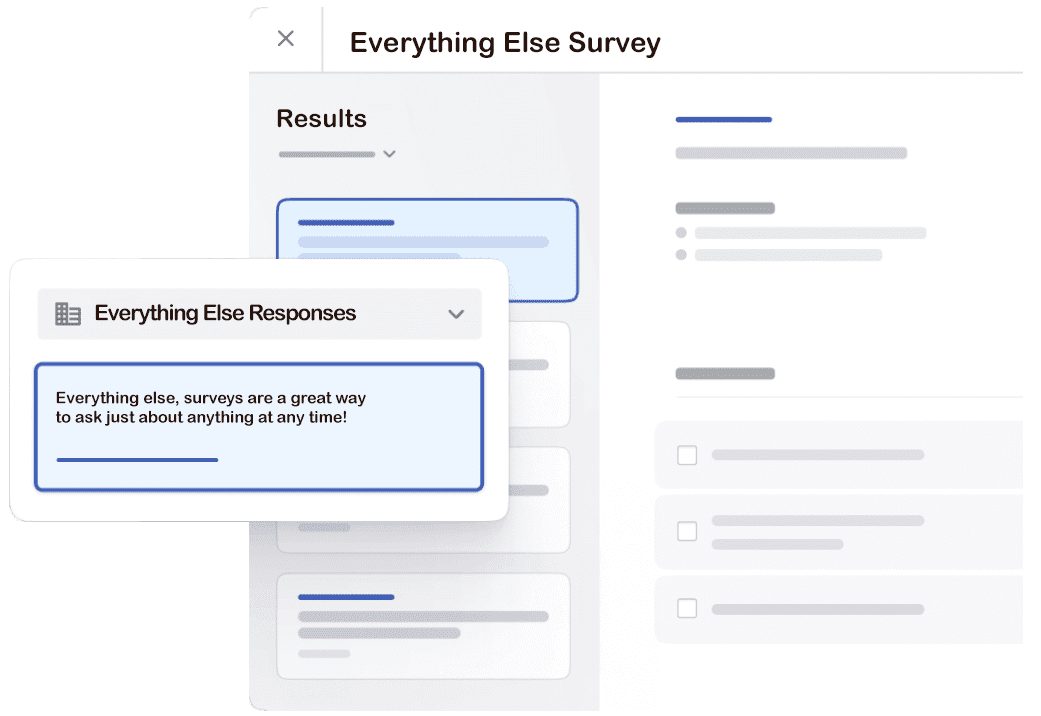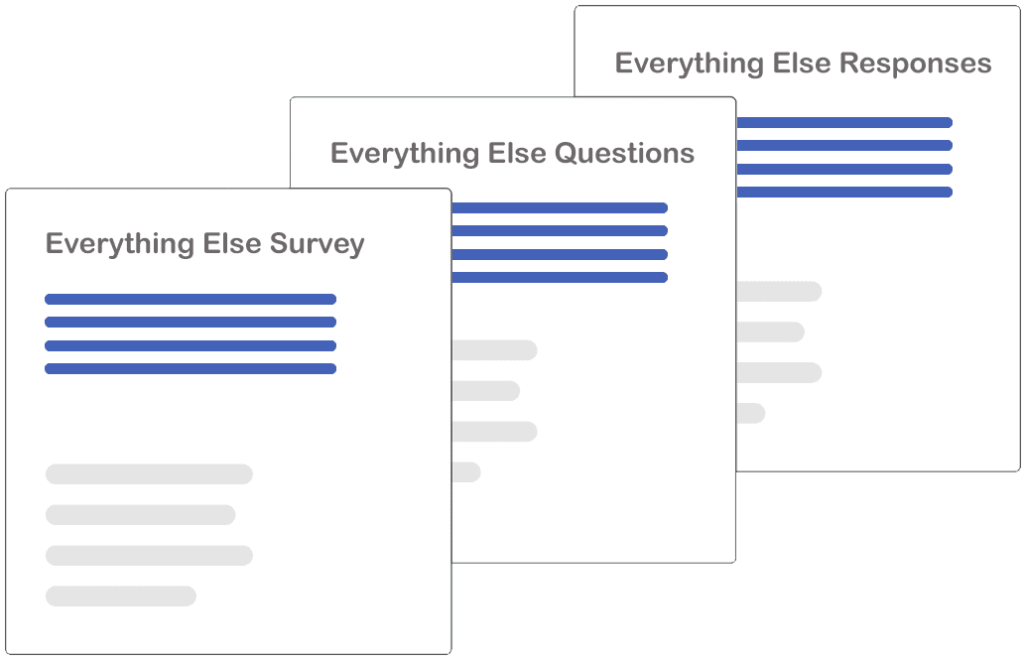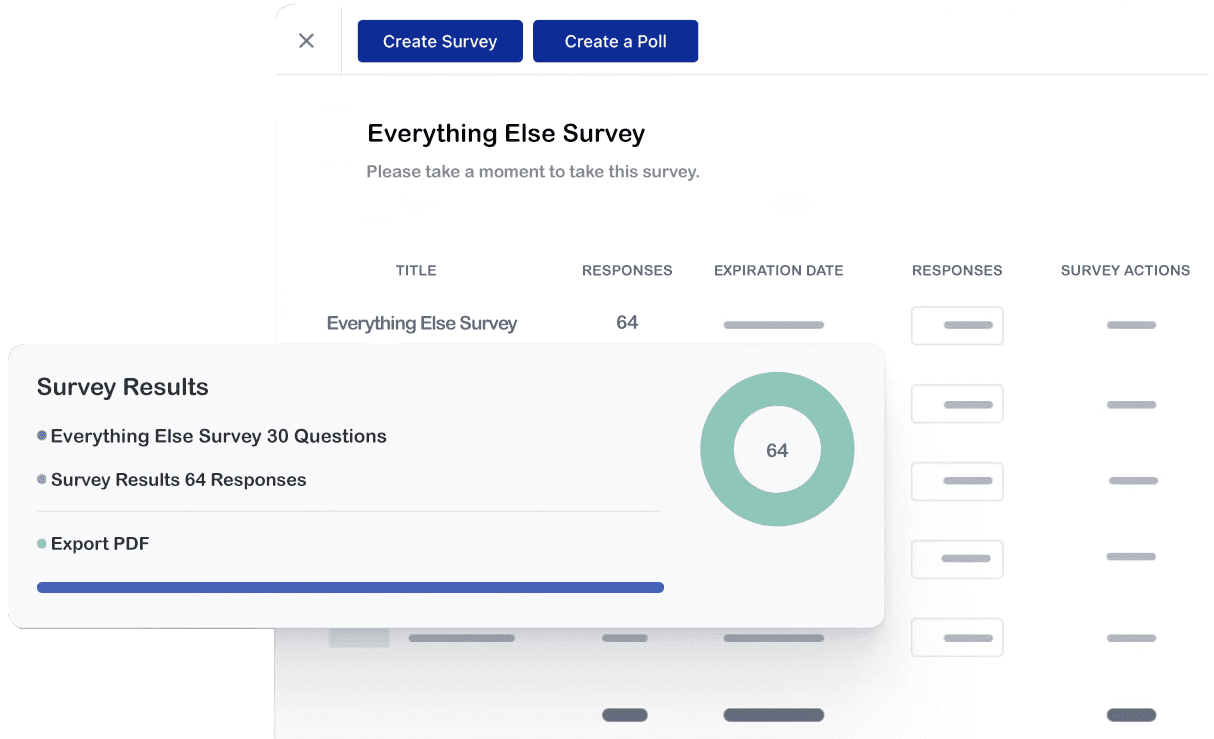


An “Everything Else” survey is a survey that includes questions about a wide range of topics. This type of survey is useful for collecting general information about a population. It can be used to gather data about people’s opinions, beliefs, and knowledge. Everything Else surveys are often used to supplement other types of surveys.
The Everything Else Survey is a comprehensive survey that touches upon a multitude of topics. The survey is designed to provide insight on the lives of people living in different parts of the world. The survey covers topics such as culture, politics, religion, and lifestyle. The survey is conducted every four years and is open to people of all ages and backgrounds.
The Everything Else Survey is a tool used by businesses to collect customer feedback. It covers a wide range of topics, from customer satisfaction to product quality. The survey is designed to help businesses improve their products and services.




The all in one platform for the public sector. Citizen and Employee Engagement Solutions by GovMetics